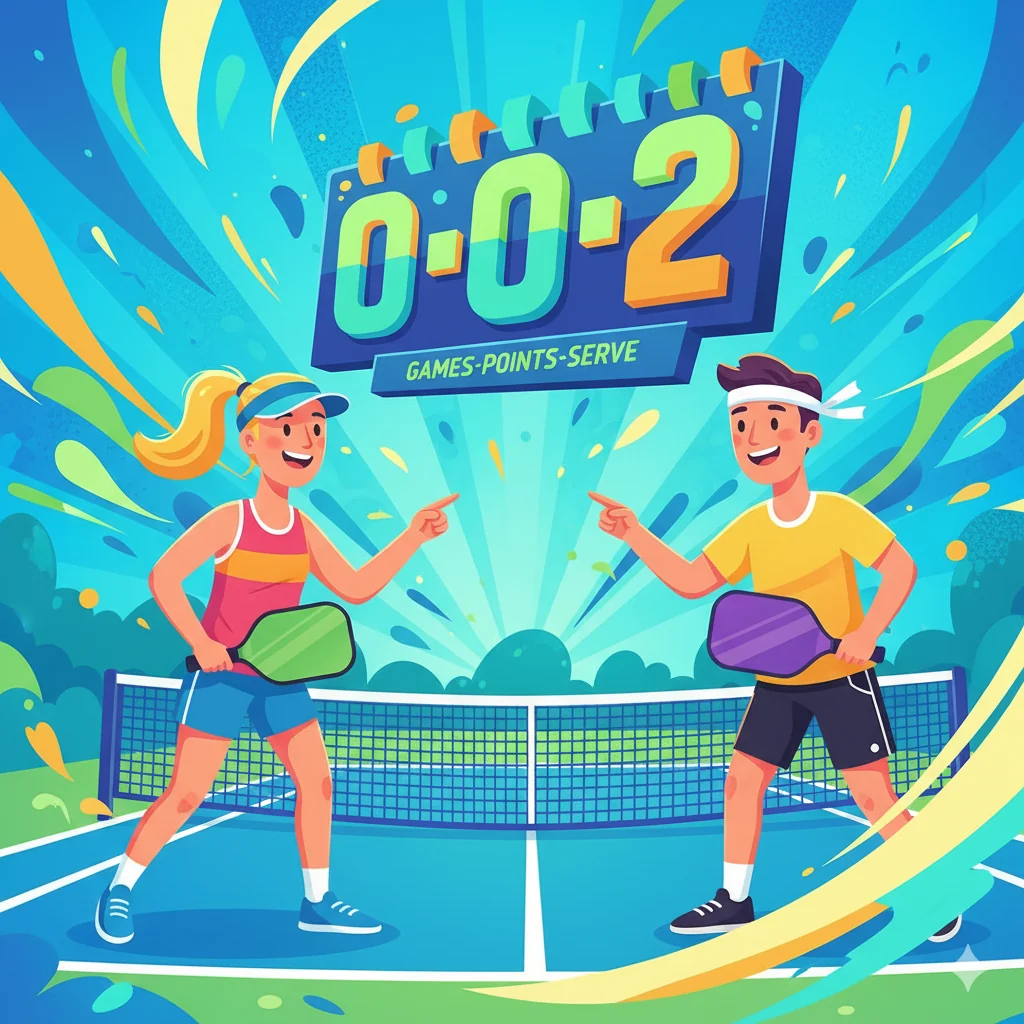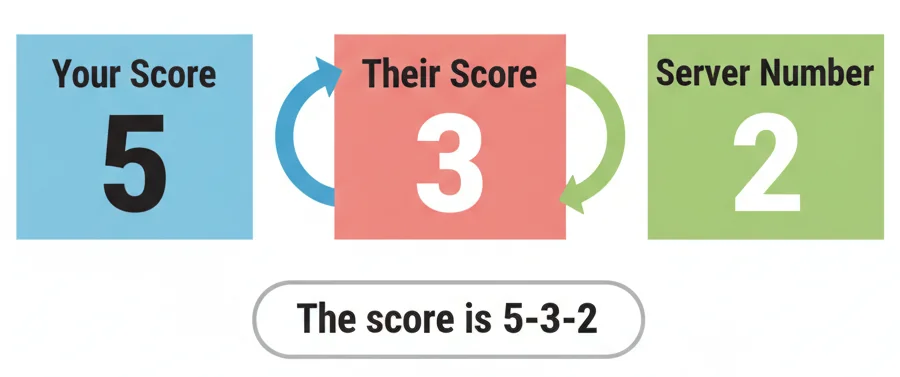Pickleball Scoring Rules: A Simple Guide for Doubles & Singles

Welcome to the most confusing part of pickleball for new players: the scoring! Hearing players shout numbers like 'zero-zero-two' can feel like learning a new language. But don't worry, it's much simpler than it sounds. This guide will break down the pickleball scoring rules step-by-step, with clear examples for both doubles and singles. By the end, you'll be calling the score like a pro.
How Does Scoring Work in Pickleball?
In pickleball, you can only score a point when your team is serving. Games are typically played to 11 points, and you must win by 2. In doubles, the score is announced as three numbers: Your Score - Opponent's Score - Server Number (1 or 2). The game uniquely starts with the score '0-0-2', meaning the first serving team only gets one server for their initial service turn.
In This Guide
The Three Magic Numbers: What Does 0-0-2 Mean?
The three-number score call is the heart of the pickleball scoring rules for doubles. Let's break down what each number represents:
- First Number: The serving team's score.
- Second Number: The receiving team's score.
- Third Number: The server number (either '1' or '2').
Think of the third number as tracking which player on the serving team is currently serving. Each team gets two servers (two chances) per service turn, except for the very first service turn of the game.
The Special Starting Score: 0-0-2
To prevent the first serving team from having an unfair advantage, they only get one server on their first service turn. To signify this, the game always begins with the score being called as '0-0-2'. The '2' indicates that they are already on their second (and final) server for that first turn. After that first side-out, the server number will proceed normally (1, then 2) for the rest of the game.

Each number in the score call has a specific and important meaning.
How to Score a Point in Pickleball
This is the most important rule in pickleball and scoring. It's simple but crucial.
You can only score a point when you or your partner is serving.
If your team is serving and you win the rally, you score a point, and the same server continues to serve (but switches sides of the court). If your team is receiving and you win the rally, you do not get a point. Instead, the other team loses their serve. This is called a 'side-out'.
Doubles Scoring & Server Rotation Step-by-Step
This is where the rules click into place. Let's walk through an example.
- The Game Starts (Score: 0-0-2): The player on the right-hand side (the 'even' court) of the starting team serves. Let's call them Player A. They are Server 2 for this first turn only.
- Your Team Scores a Point: If Player A's team wins the rally, the score becomes 1-0-2. Player A then moves to the left-hand side (the 'odd' court) and serves again. They continue serving, switching sides after each point they score.
- First Side-Out (Fault): When Player A's team loses a rally, it's a 'side-out' because they were on their second server (remember 0-0-2). The serve now goes to the other team. The score remains 1-0. The player on the opposing team who is on the right-hand side will now serve, and the score is called as '1-0-1'.
- Continuing Play: The new server (Server 1) serves. If they lose the rally, the serve goes to their partner (Server 2). The score is still '1-0', but the announcer now says '1-0-2'.
- Second Side-Out: If the second server's team loses the rally, it's a side-out. The serve goes back to the other team. This cycle continues until one team reaches 11 points (winning by 2).
What About Singles Scoring?
Good news! Singles scoring is much simpler. There is no third number because you don't have a partner.
The score is simply called as [Your Score] - [Opponent's Score].
The main rule to remember in singles is your serving position depends on your score:
- If your score is an even number (0, 2, 4, ...), you serve from the right side of the court.
- If your score is an odd number (1, 3, 5, ...), you serve from the left side of the court.
Easy Way to Remember Singles Serving
Just remember: Even Right, Odd Left. If you have an even score, you serve from the even (right) court. If you have an odd score, you serve from the odd (left) court. The receiver always positions themselves on the diagonal opposite you.
Frequently Asked Questions about Pickleball Scoring
Why does the game start at 0-0-2 in pickleball?
The game starts at 0-0-2 to minimize the significant advantage of serving first. By starting on the second server, the first team only gets one service turn before a side-out occurs. After that initial turn, both teams get two servers for all subsequent turns.
What happens if you forget the score in pickleball?
Forgetting the score is very common! If players cannot agree on the score, the official rule (USA Pickleball 4.K.) is to replay the last point. However, in recreational play, it's best to try to reconstruct the last few points to determine the correct score before resorting to a replay.
Who serves first after a side-out in doubles?
After a side-out, the serve goes to the other team. The player who is positioned on the right-hand (even) side of the court is always the one to serve first for their team's service turn. They will be Server 1.
Printable Pickleball Scoring Guide
Keep this handy guide in your pickleball bag to resolve any scoring questions on the court. It covers the 3-number callout, server rotation, and key rules.
Download PDF Guide